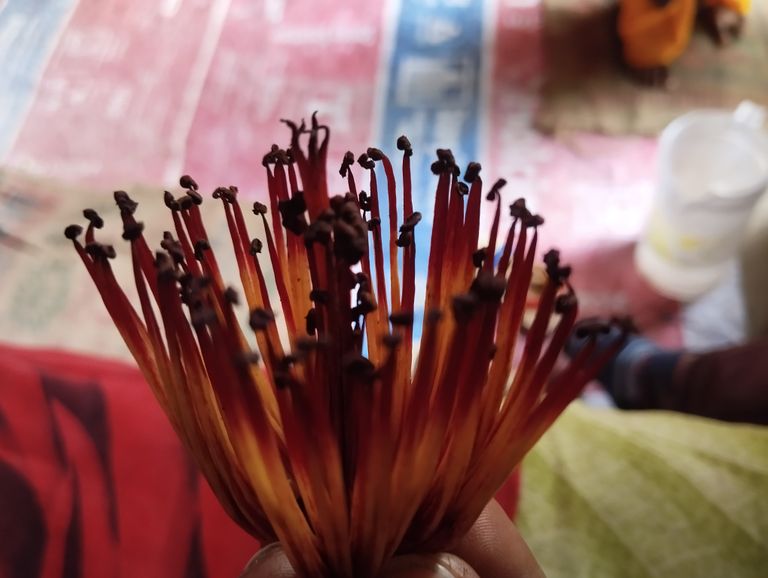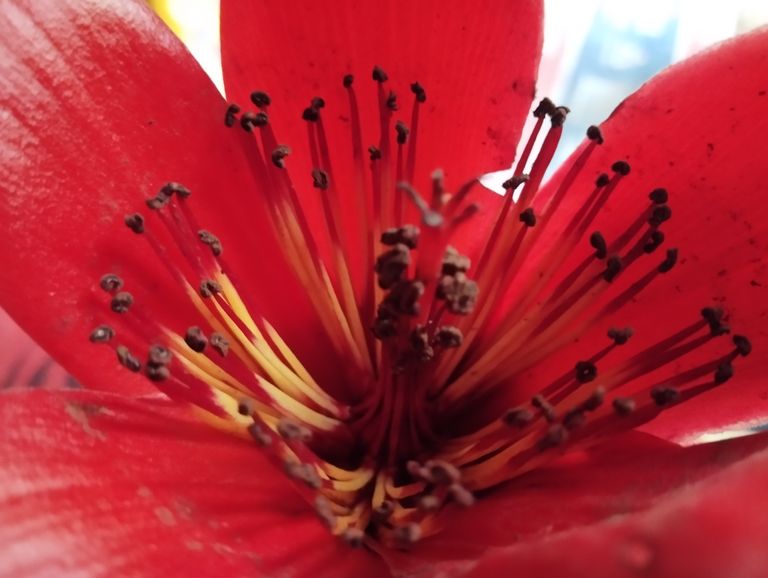
The Enchanting Beauty of Pakar Flowers.
Nature has blessed us with an incredible diversity of flora, each species exhibiting a unique charm. Among the lesser-known yet strikingly beautiful flowers is the Pakar flower (Ficus virens). Found in tropical and subtropical regions, especially in South and Southeast Asia, this flower captivates nature lovers with its delicate beauty and ecological significance.
A Glimpse into the Pakar Tree
The Pakar tree, scientifically known as Ficus virens, is a member of the fig family (Moraceae). It is a large deciduous or semi-evergreen tree that often grows in forests, riverbanks, and even urban landscapes. The tree is revered in many cultures for its shade-giving properties and association with spiritual beliefs. However, its flowers, which are often overshadowed by its broad canopy and impressive aerial roots, deserve special attention.
The Unique Beauty of Pakar Flowers
Unlike conventional flowers, the blossoms of the Pakar tree are not showy or conspicuous. In fact, the floral structure of Ficus species is quite different from common flowering plants. The flowers grow within a specialized structure called a syconium, which resembles a small fruit rather than an open blossom. These tiny flowers are enclosed within the syconium, and their beauty is revealed only when the structure is dissected. The uniqueness of the Pakar flower lies in its fascinating relationship with pollinators, particularly wasps that assist in their reproduction.
Ecological Importance of Pakar Flowers
Pakar trees and their flowers play a crucial role in maintaining ecological balance. They provide shelter and nourishment to numerous birds, insects, and animals. The symbiotic relationship between Pakar flowers and fig wasps is a marvel of nature. These wasps enter the syconium to lay their eggs, facilitating pollination in the process. Once the wasp larvae mature, they emerge and help in pollinating other flowers, ensuring the continuation of the tree’s lifecycle.
Additionally, the Pakar tree serves as a vital source of food for various wildlife species. Birds, bats, and monkeys relish its fig-like fruits, making it an essential component of the food web in forests. The presence of Pakar trees also aids in soil conservation, as their extensive root systems prevent erosion and enhance soil fertility.
Cultural and Medicinal Significance
In many cultures, the Pakar tree is considered sacred. In India, it is often planted near temples and revered for its association with mythology and spirituality. People believe that sitting under its shade brings peace and positive energy.
Apart from its cultural value, the Pakar tree has significant medicinal properties. Traditional healers have long used various parts of the tree, including its leaves, bark, and latex, to treat ailments such as skin diseases, digestive disorders, and respiratory problems. The antimicrobial and anti-inflammatory properties of its extracts have been acknowledged in herbal medicine.
Conservation and Sustainability Efforts
Despite its ecological and cultural importance, the Pakar tree faces threats from deforestation and urbanization. As natural habitats diminish, the number of these trees is gradually decreasing. Conservation efforts are essential to preserve this magnificent species for future generations.
Efforts such as afforestation programs, awareness campaigns, and strict regulations on deforestation can help protect Pakar trees. Encouraging people to plant and nurture these trees in urban areas can also contribute to sustainability and biodiversity conservation.
Conclusion
The Pakar flower, though hidden within its syconium, embodies the beauty and complexity of nature. Its intricate relationship with pollinators, ecological significance, and cultural reverence make it a remarkable species worth preserving. As we continue to explore and appreciate nature’s wonders, let us strive to protect these trees and their enchanting blossoms for generations to come. I've created a detailed blog on the beauty of Pakar flowers. Let me know if you'd like any modifications or additions.
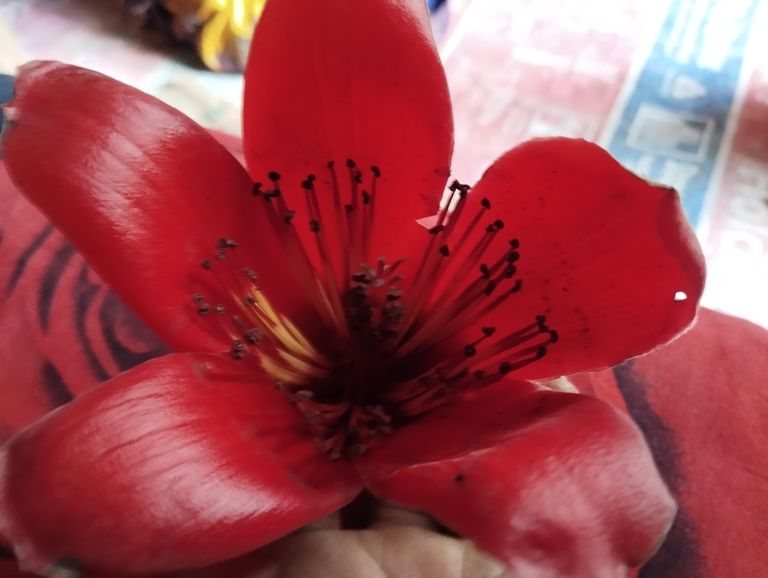
Paglar Tola: A Hidden Gem of Bangladesh
Bangladesh is a land of diverse landscapes, rich history, and cultural heritage. Among its numerous hidden treasures, Paglar Tola stands out as a place of intrigue and mystery. Though not widely known, this fascinating location has gained attention among travelers, historians, and cultural enthusiasts. In this blog, we will delve into the history, significance, and unique aspects of Paglar Tola, uncovering why it deserves recognition as a must-visit destination.
The Mystery Behind the Name
Paglar Tola, when translated, means "The Madman’s Place" or "The Lunatic’s Ground." The origin of this name has multiple theories. Some believe that a wandering sage or mystic, referred to as a "Pagla" (madman), once resided here, and his eccentric yet wise ways left a lasting impression on the local community. Others suggest that the place was historically associated with spiritual practices that seemed unconventional to the untrained eye. Regardless of the true story, the name has added an air of mysticism to this unique location.
Historical and Cultural Significance
Paglar Tola is steeped in history. Some researchers claim that this area dates back centuries and was once a hub of spiritual gatherings and meditation. Sufi saints, ascetics, and local mystics have been associated with Paglar Tola, and it remains a place of devotion for some followers even today.
Beyond spiritual significance, Paglar Tola also holds cultural importance. Folklore and local legends narrate tales of divine interventions, supernatural occurrences, and unexplained phenomena. These stories have been passed down through generations, making the place an integral part of the local oral tradition.
Geographical and Natural Beauty
Situated in a serene environment, Paglar Tola boasts lush greenery, tranquil rivers, and picturesque landscapes. Unlike the bustling cities of Bangladesh, this location offers a retreat into nature, making it an ideal spot for relaxation and introspection. The biodiversity here includes various species of birds, flora, and small wildlife, adding to its charm.
During different seasons, the area transforms in breathtaking ways. In the monsoon, the greenery flourishes, and the surroundings take on a magical appearance. In winter, the crisp air and foggy mornings create an enchanting ambiance. Nature enthusiasts and photographers will find Paglar Tola an excellent destination to capture the untouched beauty of Bangladesh.
Local Culture and Traditions
Paglar Tola is home to a tight-knit community that has preserved its traditions and way of life. The people here are known for their hospitality, and visitors are often welcomed with warm smiles and open hearts. Traditional Bengali festivities, folk songs, and religious rituals are a common sight, giving tourists a taste of authentic rural life.
One of the major attractions in the area is the annual fair held in honor of a revered mystic. This fair brings together people from different regions, featuring cultural performances, traditional handicrafts, and delicious Bengali cuisine. It serves as a window into the rich heritage of the area, making it a must-experience event.
Tourist Attractions and Activities
While Paglar Tola itself is a significant attraction, the surrounding areas also offer various activities for travelers:
Exploring Ancient Structures: Some old temples, mosques, and shrines dot the landscape, providing insight into the region’s historical evolution.
Boat Rides on Nearby Rivers: The rivers around Paglar Tola offer mesmerizing boat rides, especially during sunset when the sky turns into a canvas of vibrant hues.
Trekking and Nature Walks: With its rich biodiversity, Paglar Tola is perfect for trekking and nature walks, allowing visitors to reconnect with nature.
Interaction with Locals: Engaging with the local community offers a chance to learn about their traditions, folklore, and way of life.
How to Get There
Reaching Paglar Tola is relatively easy, depending on your starting location. It is accessible via road and public transportation from major cities like Dhaka and Chattogram. The nearest town often has small lodges and guesthouses for accommodation, making it convenient for travelers.
For those looking for a unique travel experience, a guided tour with a local expert is recommended. This ensures that visitors get a deeper understanding of the cultural and historical significance of the place.
Final Thoughts
Paglar Tola is more than just a place; it is an experience. With its deep-rooted history, cultural richness, and natural beauty, it stands as a testament to Bangladesh’s diverse heritage. For travelers seeking something beyond the usual tourist spots, Paglar Tola offers a journey into the past, wrapped in the beauty of nature and the warmth of local traditions.
So, if you are an explorer at heart, add Paglar Tola to your travel list and embark on a journey that blends mystery, culture, and serenity in one remarkable destination. I've created a detailed blog about Paglar Tola, covering its history, culture, attractions, and travel tips. Let me know if you'd like any refinements.
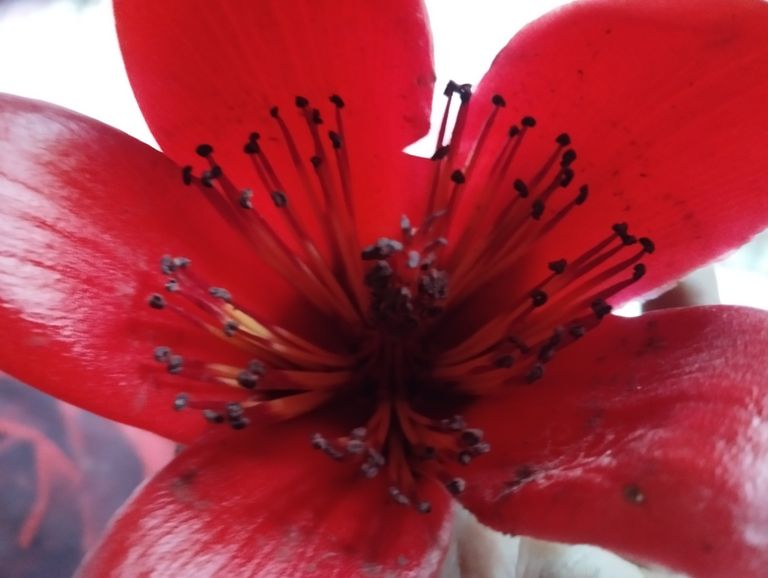
Medicinal Properties of the Pagalagar Tree
The Pagalagar Tree is a lesser-known but highly beneficial medicinal plant found in various regions. This tree has been used in traditional medicine for centuries due to its potent healing properties. Various parts of the tree, including the leaves, bark, roots, and fruits, possess numerous medicinal benefits. In this blog, we will explore the significant medicinal properties of the Pagalagar tree and its uses in natural remedies.
- Anti-Inflammatory Properties
One of the most remarkable benefits of the Pagalagar tree is its anti-inflammatory properties. The extracts from its bark and leaves help reduce swelling, pain, and redness caused by inflammatory conditions such as arthritis, muscle sprains, and joint pain. Traditional healers often prepare herbal ointments or pastes using the leaves to apply to inflamed areas.
- Wound Healing and Antiseptic Effects
The leaves and bark of the Pagalagar tree contain natural antiseptic compounds that aid in wound healing. These compounds help prevent infections, speed up the regeneration of skin cells, and minimize scarring. Crushed leaves are applied directly to cuts, burns, and sores to promote faster healing.
- Antioxidant Benefits
The presence of antioxidants in the Pagalagar tree makes it effective in fighting free radicals that cause cell damage. Consuming herbal teas or decoctions made from the leaves can improve overall health by reducing oxidative stress. This is beneficial in preventing premature aging and chronic diseases like cancer and heart problems.
- Digestive Health and Gastrointestinal Relief
In traditional medicine, Pagalagar tree extracts are used to treat various digestive ailments such as indigestion, constipation, and stomach ulcers. The bark and roots of the tree are often boiled to prepare herbal tonics that soothe the digestive system, reduce bloating, and promote better gut health.
- Immune System Booster
Rich in bioactive compounds, the Pagalagar tree enhances the body's immune response. Regular consumption of herbal extracts from the tree can help fight infections, strengthen immunity, and improve overall resistance to diseases. It is particularly beneficial for individuals prone to frequent colds, flu, and viral infections.
- Anti-Diabetic Effects
Studies suggest that the Pagalagar tree may have anti-diabetic properties due to its ability to regulate blood sugar levels. Herbal remedies derived from the tree’s bark and leaves can help improve insulin sensitivity, reduce glucose levels, and support diabetic patients in managing their condition naturally.
- Respiratory Health and Relief from Coughs
The Pagalagar tree has been used to treat respiratory problems such as asthma, bronchitis, and chronic coughs. The natural expectorant properties of its leaves help clear mucus from the airways, making breathing easier. Herbal teas prepared from its leaves or bark are commonly used to relieve cough and cold symptoms.
- Skin and Hair Benefits
The antibacterial and antifungal properties of the Pagalagar tree make it highly effective in treating various skin conditions such as acne, eczema, and fungal infections. Its extracts are also used in hair care to prevent dandruff, strengthen hair roots, and promote healthy hair growth.
- Stress Relief and Mental Wellness
Herbal preparations made from the leaves and flowers of the Pagalagar tree are believed to have calming effects on the nervous system. These natural remedies help reduce stress, anxiety, and insomnia. Consuming Pagalagar tea or using it in aromatherapy can promote relaxation and mental clarity.
- Liver Detoxification and Kidney Health
The detoxifying properties of the Pagalagar tree help cleanse the liver and kidneys, promoting better organ function. The leaves and bark help flush out toxins from the body, prevent kidney stone formation, and support overall detoxification processes.
How to Use the Pagalagar Tree in Natural Remedies
Herbal Tea: Boil dried leaves or bark in water and consume it as a tea.
Paste or Poultice: Crush fresh leaves and apply to wounds or inflamed areas.
Essential Oil Extracts: Use extracts from the bark or leaves for skin and hair care.
Decoction: Prepare a strong herbal decoction to improve digestion and detoxification.
Precautions and Side Effects
While the Pagalagar tree offers numerous health benefits, it is important to use it in moderation. Pregnant women, individuals with pre-existing medical conditions, and those on medication should consult a healthcare professional before using herbal remedies derived from the Pagalagar tree.
Conclusion
The Pagalagar tree is a powerhouse of medicinal properties that can benefit various aspects of health, from immunity and digestion to skin and respiratory health. By incorporating it into natural remedies, one can harness its healing potential safely and effectively. However, it is always advisable to seek expert guidance before using any herbal treatment.
I’ve created a detailed blog post on the medicinal properties of the Pagalagar tree. Let me know if you’d like any modifications or additional details.
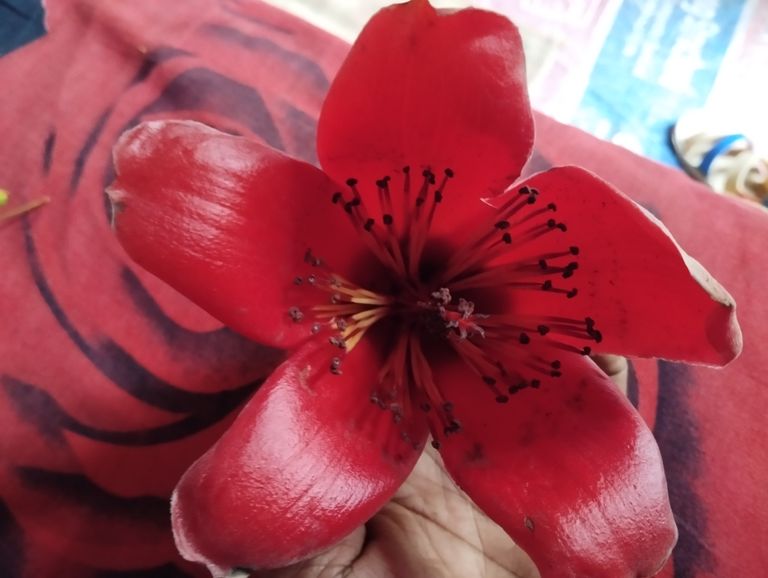
Medicinal Properties of the Pagalagar Tree
The Pagalagar Tree is a lesser-known but highly beneficial medicinal plant found in various regions. This tree has been used in traditional medicine for centuries due to its potent healing properties. Various parts of the tree, including the leaves, bark, roots, and fruits, possess numerous medicinal benefits. In this blog, we will explore the significant medicinal properties of the Pagalagar tree and its uses in natural remedies.
- Anti-Inflammatory Properties
One of the most remarkable benefits of the Pagalagar tree is its anti-inflammatory properties. The extracts from its bark and leaves help reduce swelling, pain, and redness caused by inflammatory conditions such as arthritis, muscle sprains, and joint pain. Traditional healers often prepare herbal ointments or pastes using the leaves to apply to inflamed areas.
- Wound Healing and Antiseptic Effects
The leaves and bark of the Pagalagar tree contain natural antiseptic compounds that aid in wound healing. These compounds help prevent infections, speed up the regeneration of skin cells, and minimize scarring. Crushed leaves are applied directly to cuts, burns, and sores to promote faster healing.
- Antioxidant Benefits
The presence of antioxidants in the Pagalagar tree makes it effective in fighting free radicals that cause cell damage. Consuming herbal teas or decoctions made from the leaves can improve overall health by reducing oxidative stress. This is beneficial in preventing premature aging and chronic diseases like cancer and heart problems.
- Digestive Health and Gastrointestinal Relief
In traditional medicine, Pagalagar tree extracts are used to treat various digestive ailments such as indigestion, constipation, and stomach ulcers. The bark and roots of the tree are often boiled to prepare herbal tonics that soothe the digestive system, reduce bloating, and promote better gut health.
- Immune System Booster
Rich in bioactive compounds, the Pagalagar tree enhances the body's immune response. Regular consumption of herbal extracts from the tree can help fight infections, strengthen immunity, and improve overall resistance to diseases. It is particularly beneficial for individuals prone to frequent colds, flu, and viral infections.
- Anti-Diabetic Effects
Studies suggest that the Pagalagar tree may have anti-diabetic properties due to its ability to regulate blood sugar levels. Herbal remedies derived from the tree’s bark and leaves can help improve insulin sensitivity, reduce glucose levels, and support diabetic patients in managing their condition naturally.
- Respiratory Health and Relief from Coughs
The Pagalagar tree has been used to treat respiratory problems such as asthma, bronchitis, and chronic coughs. The natural expectorant properties of its leaves help clear mucus from the airways, making breathing easier. Herbal teas prepared from its leaves or bark are commonly used to relieve cough and cold symptoms.
- Skin and Hair Benefits
The antibacterial and antifungal properties of the Pagalagar tree make it highly effective in treating various skin conditions such as acne, eczema, and fungal infections. Its extracts are also used in hair care to prevent dandruff, strengthen hair roots, and promote healthy hair growth.
